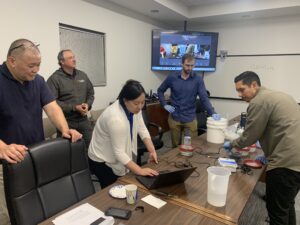Low-cost sensors for detecting illicit discharges transitioned to end users

SCCWRP and its partners have successfully transitioned a network of low-cost field sensors that play a key role in automating detection of illicit pollutant discharges to a monitoring team at Orange County Public Works, following the completion of a pilot study in Orange County storm drains.
During a workshop held at SCCWRP in June, researchers trained end users from Orange County on field deployment, sensor maintenance, and data analysis. The sensors are coupled with an algorithm that automates detection of illicit pollutant discharges that can pass rapidly through storm drain systems. The technology was developed by the BoSL Water Monitoring and Control Research Team in Australia.
Historically, researchers have conducted periodic, in-person field sampling during dry weather to detect these discharges – a monitoring approach that can limit managers’ chances of detecting transitory pollutant discharges. Additionally, processing field samples can take weeks to generate results, further hampering the time managers have to detect an illicit discharge and then track it back to an upstream source.
By contrast, automated monitoring produces a continuous stream of real-time data that enables the algorithm to alert managers to spikes and other sudden changes in water quality and flow that can lead to focused source-tracking follow-up work.
More news related to: Runoff Water Quality, Stormwater BMPs